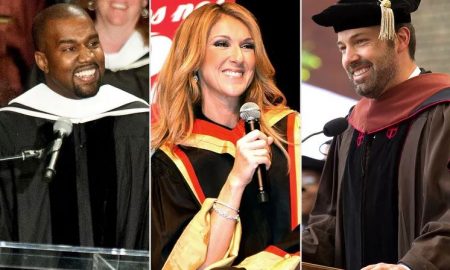
5 Handy Steps to Follow in Clearing Your Student Loan Debt

According to the Federal Reserve Bank of New York’s Center for Microeconomic Data, student loans stood at a whopping $1.4 trillion right after the 1st Quarter in 2018.
The data shows that about 50% of the debt amounts range from $6,744 to $28,116. While these numbers are not that bad, the trend is sufficient enough to cause financial strain on the economy. As a result, the Center for Retirement Research at Boston College estimates that some valuable elements of the economy like retirement saving plans could get hampered.

While it’s true that student debt does not leave a serious dent on 401(K) participation rates, especially among college students, it tends to influence the amounts that students save.
The authors of the report cited that people living with debt have about half as many assets by age 30 when compared to those without any debt. The report further went ahead to opine that there was a great likely hood that this demographic of students also tended to save much less when making retirement plans.
The thinking here is that young graduates tend to view student loans as constraints to their 401(k) saving. The researchers in the study mentioned that when such behavior was exhibited, there’s was a great likelihood for such people to save much less than their financial might at the start of their career.
Perspective
As revealed by Douglas Boneparth, the president of Bone Fide Wealth, young people tend to overemphasize the importance of short-term goals like cash reserves, clearing student debts, and buying homes.
Boneparth shared that at present, millennials were being castigated for being unable to save. He, however, believes that anyone just starting out should not directly go for the bull’s eye. Instead, the aim should lie in identifying the key goals and perfecting how to handle finances.
He mentioned that today’s generation is much different compared to previous generations in that there are student loan debts, data plan expenses, and extremely slow wage growth.
Getting Priorities Right
As per Kristi Sullivan, a financial planner plying her trade at Sullivan Financial Planning, getting the priorities right is the single most important thing to do. She recommends that the best way to go about this is by building up a savings account worth about 3 months’ living expenses.
With the emergency fund already established, Sullivan believes that young people should proceed to start contributing funds to employer-sponsored retirement plans.
Do the Math

Mark Edwards, who dabbles as a lecturer at California Lutheran’s University, shared that it’s always a good idea to have a calculator at the ready.
Edwards divulged that the approach one takes in clearing student loans is heavily dependent on various factors. Key among them is the compensation against the amount of funds necessary to sustain one’s standard of living; the loan interest rates versus returns made; whether or not one is able to consolidate loans; the need to set up an emergency fund and the income one expects to earn in future.
His take on this is concurred by Autumn Campbell, who specializes in financial planning at The Planning Center. She opines that sometimes it’s best to settle debts early to ensure that the amounts don’t pile up and high-interest rate charges aren’t imposed.
On the same note, Campbell notes that debts with modest interest rate charges can actually be temporarily ignored. Instead, the funds can be redirected towards investments which are more rewarding in the present.
Value Addition

As Campbell noted, many young workers tend to prefer clearing debts instead of making retirement savings. This situation typically arises as a result of cash-flow problems and the emotional disconnect caused by massive debts.
At the end of the day, it all depends on where customers would rather their funds went. Ultimately, a decision needs to be made on what really matters. Personal pride in achieving a debt-free status or the need to optimize finances for long-term benefit.
The 401(k) Bottom Line
Employees without 401(k) plans need to learn about the times is money concept and proceed to learn about how trade-offs are calculated while at it. According to Edwards, the key issue here should be the opportunity cost. The onus is on individuals to analyze what they would rather achieve at the end of the day, debt reduction or low impact contributions to an IRA.
Edwards revealed that whatever one chooses, it’s always going to be a better decision than if those funds were spent on sustenance and purchasing miscellaneous goods.
More in Pocket Change
-
`
Why You Need to Think Twice Before Buying a House
So, you have been scrolling through real estate listings, envisioning your dream kitchen, and even bookmarking paint colors for the nursery....
November 26, 2023 -
`
Santo Spirits: Sammy Hagar and Guy Fieri’s Joint Venture
In the world of business partnerships, some combinations might seem unconventional at first glance. But when you delve deeper into the...
November 16, 2023 -
`
Everything You Need to Know About Mortgage Rate Lock
You have probably embarked on the exciting yet nerve-wracking voyage of purchasing a home. Amidst the sea of paperwork, open houses,...
November 9, 2023 -
`
7 Effective Ways to Make Your Business More Sustainable
In an age of rising environmental consciousness, making your business more sustainable isn’t just a trend; it’s a necessity. Sustainable practices...
November 3, 2023 -
`
Housing Market Going Up? Then Why Not Rent?
“Buy a house! It is the best investment!” How many times have you heard that? Probably enough to make a drinking...
October 29, 2023 -
`
Surprising! Celebs Who You Didn’t Know Had a Master’s Degree
When it comes to celebrities, we often associate them with glitz, glamour, and blockbuster movies. But did you know that some...
October 17, 2023 -
`
Navigating the Housing Maze: The 7% Mortgage Rate Quandary
If there is one thing that this year has thrown our way (apart from those fascinating tech gadgets we did not know...
October 12, 2023 -
`
Where to Buy a House in the U.S With a $100K Salary
Got a cool $100,000 annual paycheck in your pocket? Cheers to that accomplishment! With such a financial cushion, dreams of homeownership...
October 6, 2023 -
`
The “Grave” Housing Crisis Forcing U.S. Homeowners to Sell Their Houses
Every culture has its dreams and aspirations. For those living in the United States, it has traditionally been an idyllic house, spacious and...
October 1, 2023















You must be logged in to post a comment Login